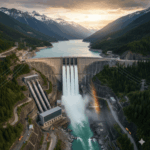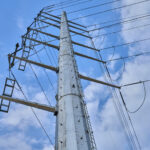The Indian mining sector has been a success story in waiting for decades
“The major steps taken by the government in 2015 to revive the industry included passage of the Mines and Minerals (Development & Regulation) Act and initiating the process for starting auction of mines bearing minerals such as iron ore, bauxite and limestone.” Rajesh Nath, MD, VDMA
What is your outlook for the mining industry for 2016-17?
India’s multi-billion dollar mining industry faces a ‘tough’ 2016 ahead amid weak global markets, even as the government plans to fast-track auctions and check illegal mining with satellite-based surveillance. The Indian mining sector has been a success story in waiting for decades. Despite enjoying an endowment of the top 5 or 6 reserves globally across commodities such as thermal coal and iron ore, the mining industry has remained relatively small and stagnant. In fact over the last decade, the contribution of mining to India’s GDP has fallen from 1.2 per cent to 1 per cent.
The growth of mining sector is crucial for the success of ‘Make in India’ campaign. What are the challenges affecting the growth of the Indian mining sector?
India is in dire need of foreign investment to boost growth in various sectors particularly in mining and metals, infrastructure and construction. To achieve this, the government has been opening up various sectors for foreign direct investment (FDI), since the last few years. However, in the last two fiscal years, FDI inflow declined by 17%, while FDI into the mining sector declined to a paltry US$24m in FY14 from US$204m in FY12. Procedural and permit delays in mining operations, regulatory and administrative procedures, inadequate infrastructure facilities and sustainability have led to very low FDI inflows in the mining sector historically. Moreover, coal, the largest mined mineral in India, was never opened to commercial mining, resulting in zero interest by global mining majors. However, with the promulgation of the MMDR Act, investment in mining and metals sector is expected to improve as it ushers in improved transparency and speed in licensing and permits.
What are the measures that the government needs to consider to revive and boost the mining sector?
Despite being a mineral rich country, India accounts for a very low share in the global exploration budget — only 0.6 per cent in 2014. Although the exploration budget for the country increased by 9.9 per cent y-o-y to US$61.9m in 2014, it is much lower than major regions including Canada and Australia, which stood at US$1,487m and US$1,254m, respectively. There exists a pressing need to raise investment and expedite the exploration process. Only 5%–20% of the available mineral resources have been explored in India to date, compared with almost 100% geophysical and geochemical surveys in Australia.
Several projects have been abandoned due to delays in acquiring land and obtaining environmental and forest clearances. According to the Fraser institute’s Policy Potential Index (PPI), that surveys mining and exploration companies to assess the impact of public policy factors on investment, India is ranked low at 63 out of 122 provinces/ countries. The PPI score stood at 47.5, reflecting an immediate need for improvement. The MMDR Act is expected to serve as a major step in resolving these issues. However, the progress to resolve policy related bottlenecks remains slow.
What would you say, were the major positives for the mining industry in 2015?
A number of policy measures are in works to revive the sector that saw earnings take a beating due to softening prices and subdued demand. The major steps taken by the government in 2015 to revive the industry included passage of the Mines and Minerals (Development & Regulation) Act and initiating the process for starting auction of mines bearing minerals such as iron ore, bauxite and limestone.
The government also notified National Mineral Exploration Trust (NMET) to encourage mineral exploration and followed up on various rules and guidelines that can help in improving the ease of doing business for miners. Another major initiative include checking illegal mining in the country is a partnership with Indian Space Research Organisation (ISRO) for satellite surveillance of mineral blocks.
Furthermore, the Supreme Court in September 2014 cancelled the allotment of 204 coal mines after declaring the allocation ‘arbitrary’ and ‘illegal’. Subsequently, the government promulgated the Coal Mines (Special Provisions) Ordinance, 2014 (subsequently an Act), to provide for allocation of coal mines and vesting of the rights and title to and interest in the land and mine infrastructure, together with mining leases, in successful bidders and allottees through the auction process. The revenue generated through auctioning of coal blocks will benefit the state governments and will, in turn, be utilised for the betterment of project affected people (PAP), development of infrastructure and exploration of mining areas.
What would be the major expectations of mining industry from the 2016-17 budget?
The Indian Government has set the stage for a paradigm shift in the Indian mining sector with the Supreme Court directed coal auctions and the proposed auction of other minerals. These broad-based reforms proposed by the Government would have several implications, some of them being:
• An increase in mineral exploration, production and availability, which are likely to aid the commissioning of many stalled projects
• Significant fundraising for state governments from the auction of mineral resources ( around US$250–300b over a 25–30 year period, according to many prevalent estimates)
• A more stable and predictable regulatory environment facilitating growth in the sector
After formulating the MMDR Act, the government in April 2015, has come out with draft rules for auction with an intention to implement them for all further auctions of minerals. This is further expected to clarify any ambiguity and simplify procedures in the MMDR Act and provide a fillip to mining activity in the country.
What is your take on the future of the Indian Mining Equipment industry?
The Indian market developed for mining equipment manufacturers relatively favourable this year. For the first eight months exports from Germany to India doubled to an amount of 27.7 million Euro. This is still far away from the peaks reached in 2008 or 2011. But it confirms the hope in an increasing mining business in India. Machines most ordered had been those for crushing or milling of minerals (48%) followed by machines for extraction, roadway driving respective tunnel boring machines (40%).
Extensive mechanization and automation is required to make Indian mines more competitively productive to narrow the gap between the demand and supply. How can this be achieved?
German mining machinery manufacturers see the need for raw material producers to reduce costs as a further cause for optimism, since this can only be achieved by increasing efficiency. The industry presented the first machinery involved with Industry 4.0 to mine coal or other material entirely independently and autonomously in early 2010, and in global comparison is at the forefront of modernising its own production facilities. Furthermore German manufacturers and VDMA Mining do a lot to keep a leading position in mining technology, especially in underground mining. In our steering committee the manufacturers discuss the development in mining technology and promote collaborative research in cooperation with mining universities in Germany.
What are the latest technological innovations which can help the Indian mining industry match the global standards?
Based on the Industry forecast for the next 20 years, there is a need to develop indigenous capability to design and produce the following complex machineries to be able to meet the market demand, bulk of which is currently imported:
• High capacity Electric Dump Trucks ~ 190 ton – 240 ton
• High capacity Rope shovels ~ 42 Cum
• Walking Draglines ~ 72 m – 33 Cum; 150m – 50 Cum
• Hybrid Drive Loaders of high capacity ~ 10 cum bucket
• Electronically Controlled Emission Compliant engine ~ 2500 HP
• Fully Automatic Electronically Modulated Transmission ~ 1500HP
• Long Wall Mining systems and Continuous miners for underground mines
• Axial piston pumps and motors
•Cutter Suction Dredgers and Trailer Suction Hopper Dredgers.









